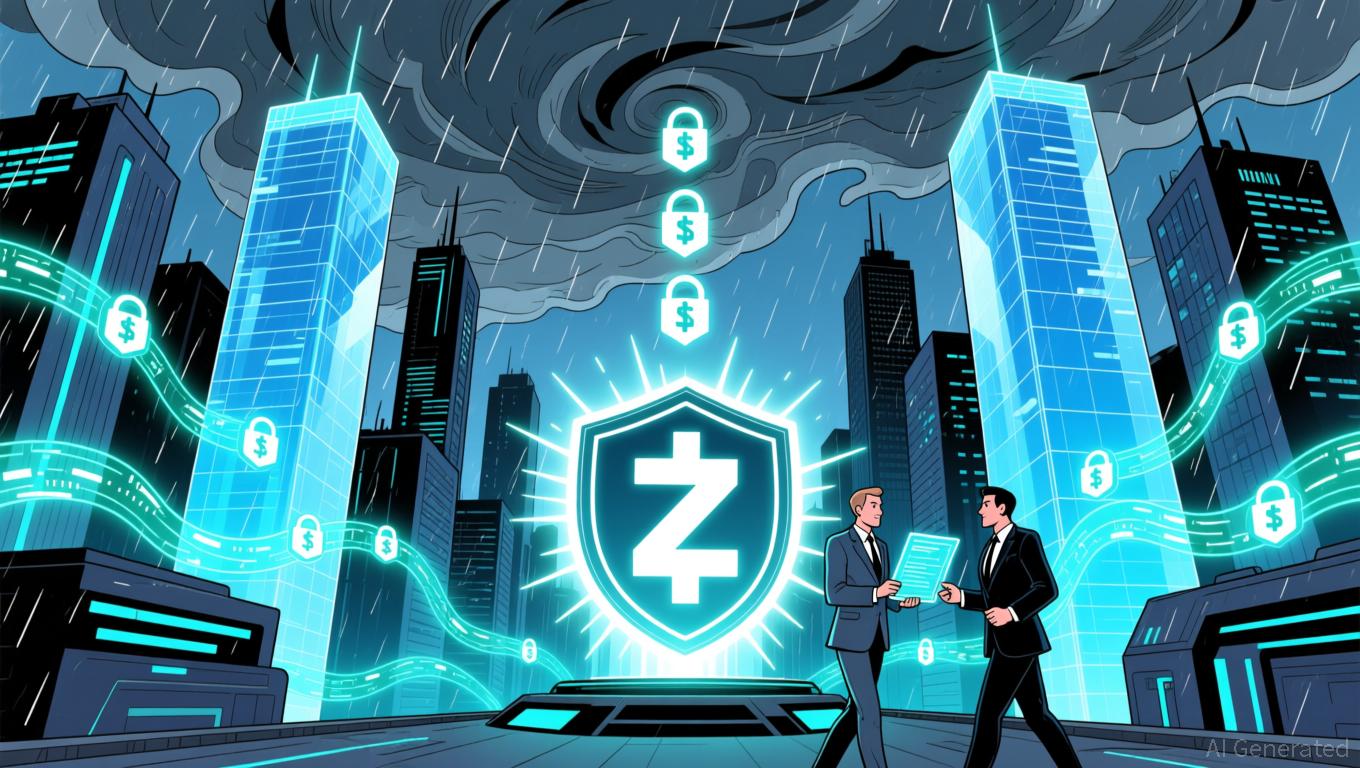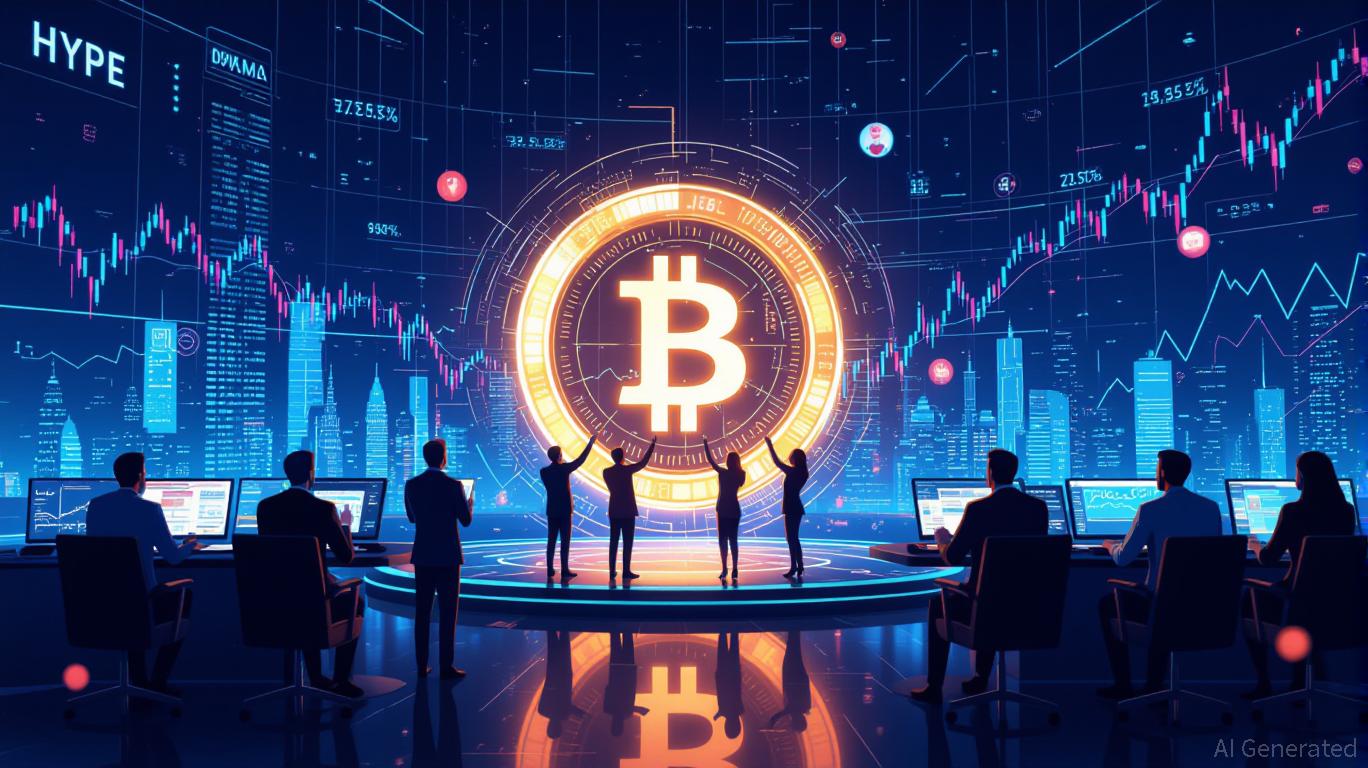Governments Turn to Cryptocurrency as a Practical Defense Against Inflation and Currency Instability
- Bolivia integrates stablecoins into its financial system to combat 22% inflation, ranking 46th globally in crypto adoption after reversing a prior ban. - Regional efforts include Mexico's 314-petaflop AI supercomputer and Brazil's KuCoin-Pix integration, reflecting Latin America's crypto-driven economic strategies. - UAE's Abu Dhabi approves Ripple's RLUSD for institutional use, while Dubai's regulatory advances position the Middle East as a crypto infrastructure hub. - Challenges persist, including Boli
Cryptocurrency Adoption Accelerates Amid Fiat Currency Instability
As inflation undermines the reliability of traditional currencies, both countries and individuals are increasingly turning to cryptocurrencies as alternative financial solutions. Bolivia stands out as a recent example, having integrated stablecoins into its banking sector and now ranking 46th worldwide for crypto adoption. The Bolivian government has authorized banks to provide savings accounts, credit cards, and loans backed by stablecoins, overturning its previous prohibition on such assets.
This policy shift followed a dramatic 530% increase in crypto transaction volumes—from $46.5 million at the start of 2024 to $294 million in the first half of 2025—with total transactions surpassing $15 billion between July 2024 and June 2025. Economy Minister Jose Gabriel Espinoza described the move as a practical response to rising inflation, currency devaluation, and limited access to financial services.
Regional Developments in Digital Finance
Bolivia’s embrace of crypto mirrors broader efforts across Latin America to stabilize economies and modernize financial infrastructure. Mexico, for example, has unveiled plans to construct "Coatlicue," the region’s most powerful supercomputer, boasting 314 petaflops of processing power—making it seven times more capable than Brazil’s current leader. This initiative aims to advance artificial intelligence and data processing capabilities.
In Brazil, the integration of KuCoin Pay with the Pix instant payments system now allows 26 million users to convert cryptocurrencies directly into the Brazilian real, reinforcing Brazil’s leadership in crypto adoption across Latin America.
Global Regulatory Progress and Security Concerns
Regulatory milestones are further legitimizing the crypto sector. Ripple’s RLUSD stablecoin recently received approval for institutional use in Abu Dhabi’s Global Market, a jurisdiction recognized for its rigorous digital asset regulations. Similar approvals in Dubai highlight the Middle East’s growing prominence as a center for crypto innovation.
Despite these advancements, challenges remain. Bolivia’s swift adoption of stablecoins—especially USDT—has sparked debate over the adequacy of regulatory protections, the need for consumer education, and the risks posed by volatility, even for dollar-pegged assets. Security remains a pressing issue, as demonstrated by a recent $36 million breach of Solana hot wallets at South Korea’s Upbit exchange.
Stablecoins as a Hedge Against Inflation
Globally, stablecoins are increasingly viewed as tools to counteract inflation and currency shortages. In Bolivia, both businesses and consumers are now pricing goods in USDT to shield themselves from the declining value of the boliviano. The state-owned energy company YPFB is also considering crypto-based payments for imports. To further support its economic strategy, the Bolivian government has announced $9 billion in multilateral loans, aiming to stabilize an economy grappling with a 22% inflation rate and persistent fiscal deficits.
Looking Ahead: The Need for Strong Regulation and Transparency
While these developments mark significant progress, experts stress that long-term success depends on comprehensive regulation, public awareness, and transparent institutions. As Minister Espinoza remarked, "You cannot control global crypto forces, so embracing them and using them to your advantage is the only realistic path." With Latin America and the Middle East at the forefront, the dynamic between unstable fiat currencies and digital finance is rapidly transforming the global economic landscape.
Disclaimer: The content of this article solely reflects the author's opinion and does not represent the platform in any capacity. This article is not intended to serve as a reference for making investment decisions.
You may also like
Zcash News Today: Zcash's Approach to Privacy: Is It a Partner or Rival to Bitcoin in the Changing Crypto Landscape?
- Zcash (ZEC) leads privacy coin resurgence in 2025, generating $47.5M in fees (560% surge) and ranking fourth globally in blockchain fee share. - OKX relisting triggered 12% price jump to $600, fueled by quantum-resistant upgrades, Winklevoss-backed $150M investment, and U.S. regulatory shifts. - Privacy coin debate intensifies: critics warn Zcash could split Bitcoin's institutional support, while proponents highlight its quantum-safe governance and 11,590 daily active wallets. - Emerging rivals like Ghos

Bitcoin Updates Today: 2025 Cloud Mining Surge: Automation and Easy Access Propel Widespread Crypto Adoption
- 2025 cloud mining platforms like WPahash enable free XRP/BTC/DOGE mining via mobile apps, offering $100 bonuses and 16 EH/s hashrate for U.S.-compliant investors. - Swiss platforms leverage AI-optimized mining and renewable energy, with Geo Therm Farm Max delivering 8.8% ROI in two days through 241 TH/s hashrate. - Dogecoin cloud mining surges via Hashj's 28.3 EH/s infrastructure and $118 bonuses, aligning with 2026 green energy expansion goals. - Analysts predict 35% annual growth in cloud mining adopti

ARK Favors Technology and Industrial Sectors While Tesla Faces Worldwide Regulatory Challenges
- ARK Innovation ETF sold $11.4M Tesla shares in Nov 2025, reallocating to Coinbase and Deere amid regulatory risks. - Tesla faces trademark disputes in India and delayed FSD approval in Europe, complicating its growth trajectory. - ARK boosted Coinbase exposure for crypto adoption and Deere for industrial automation amid resilient construction demand. - Institutional investors increasingly favor companies with clear regulatory pathways and scalable business models over uncertain tech bets. - The shift ref

Hyperliquid's (HYPE) Latest Price Rally: Unpacking the Hype Behind the Surge
- Hyperliquid's HYPE token surged in late 2025 due to TVL growth, product upgrades, and institutional adoption. - TVL reached $3.5B by June 2025 via EVM compatibility and HIP-3 fee cuts (0.0045%), attracting $50M+ daily inflows. - Robinhood listing triggered 13% price jump, with $100M+ whale positions and $8B daily volume on HyperliquidX. - Market sentiment remains split: RSI 17 suggests oversold conditions, but 10M token unlock risks $500M monthly supply overhang. - Institutional partnerships (Paxos USDG0
